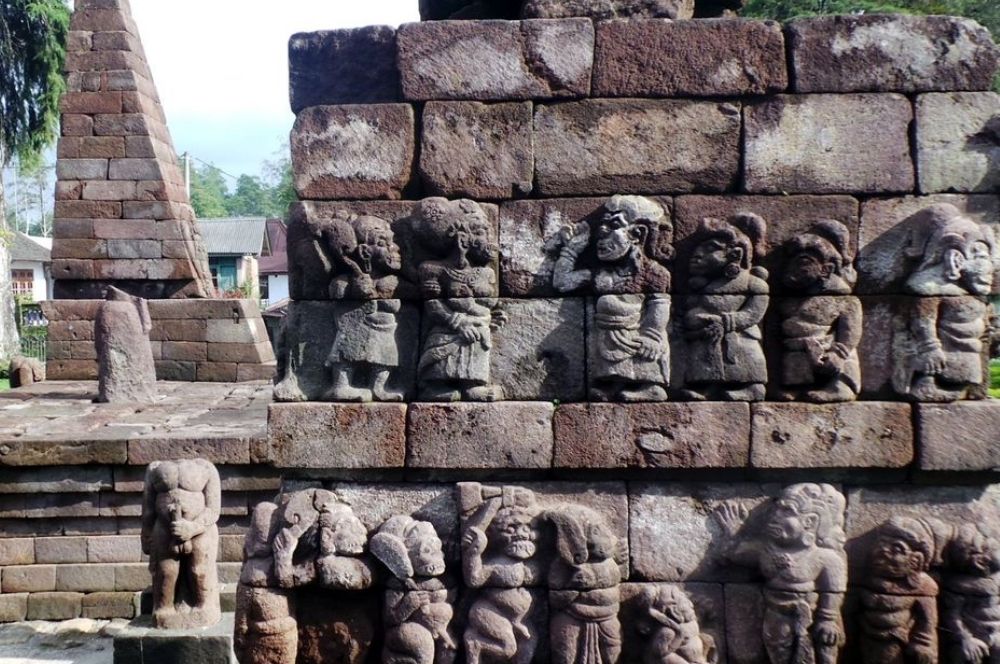
Candi Sukuh is one of the most fascinating Hindu temples in Karanganyar, Central Java, Indonesia. Built in the 15th century during the decline of the Majapahit Empire, this temple stands out due to its unusual architectural style and symbolic carvings. Unlike other Hindu temples in Java, which follow the classic Indianized design, Candi Sukuh resembles Mayan pyramids, adding to its mystique and historical significance.
One of the most striking aspects of Candi Sukuh is its terraced, step-pyramid design, which is highly uncharacteristic of traditional Javanese Hindu temples. This unique form has led to many theories regarding its purpose and origins. Some believe the temple was a place of purification, while others suggest it was used for fertility rituals due to the presence of lingga and yoni symbols, which represent male and female energy.
The entrance to the temple complex features a large stone gate with intricate carvings of wayang figures and inscriptions in the ancient Javanese script. The courtyard contains various reliefs depicting stories from Hindu epics such as the Mahabharata, as well as scenes symbolizing human life and spiritual transformation.
Candi Sukuh is not only an archaeological wonder but also an important spiritual site. Visitors often experience a deep sense of tranquility as they explore its enigmatic ruins. The temple’s secluded location on the slopes of Mount Lawu adds to its mystical atmosphere, making it a great place for reflection and meditation.
Candi Sukuh is located approximately 36 km from Solo (Surakarta) and can be reached via a scenic drive through lush tea plantations and mountainous landscapes. Many travelers visit this temple along with Candi Cetho, another ancient Hindu site nearby, to gain a deeper understanding of Central Java’s rich heritage.
For an immersive cultural journey, consider booking a guided tour with Central Java Tour or Java Bali Holiday. Their experienced guides will provide valuable insights into the temple’s history, architecture, and religious significance, ensuring a memorable exploration of Java’s ancient wonders.